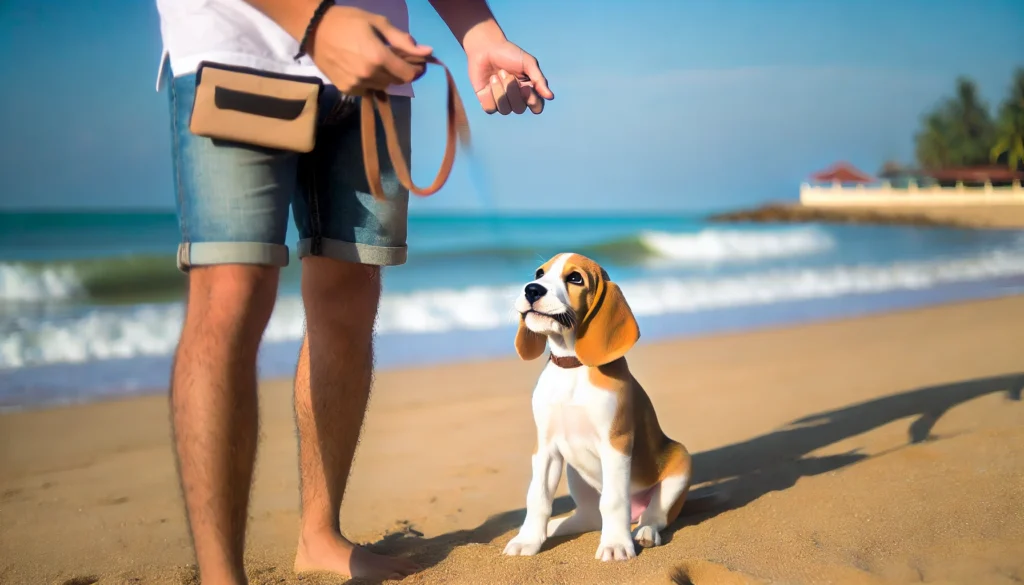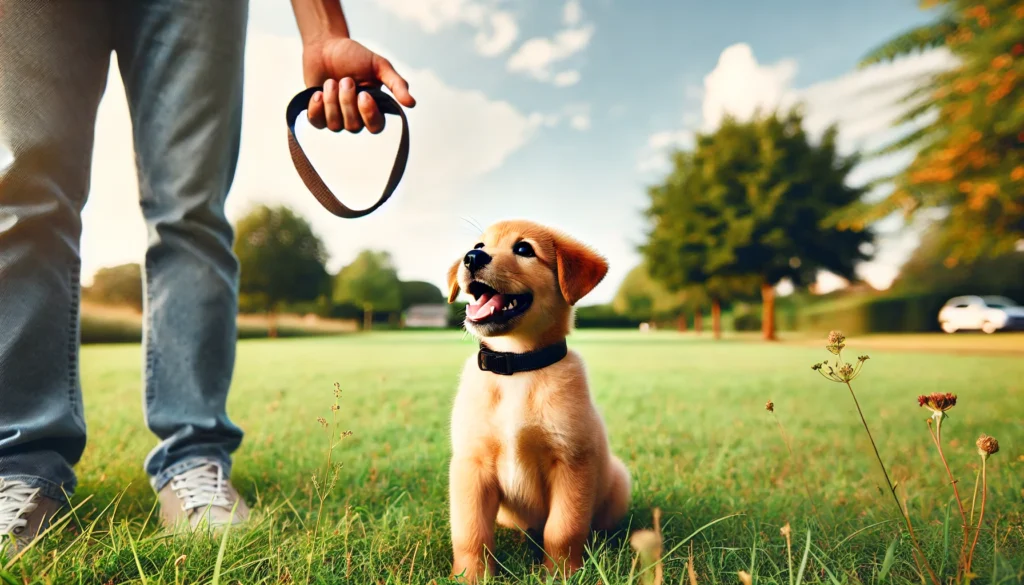Training a puppy is one of the most rewarding and, at the same time, challenging stages of life with a pet. From the moment you take your new friend home, every interaction is a teaching and bonding opportunity. As an expert veterinarian, I'm here to share a complete guide on how to train your puppy efficiently, ensuring he grows up to be a happy, well-behaved companion.
First Steps in Training
Training a puppy should begin as soon as he arrives home. The first essential step is socialization. Expose your puppy to different people, places, sounds, and other animals in a positive way. Early socialization helps prevent fearful or aggressive behavior in the future.
In addition, introduce basic commands from an early age, such as “sit”, “stay” and “come”. Always use positive reinforcement, rewarding the puppy with treats, petting or toys when he responds correctly. Remember that patience is key; puppies have short attention spans and need short, consistent training.
The Importance of Consistency
Consistency is one of the pillars of dog training. All family members must be aligned in the commands and rules established for the puppy. For example, if the command to sit is “sit”, everyone should use the same word and not variations such as “sit” or “sit”.
Creating a routine is also vital. Feeding, walks and training should occur at approximately the same times every day. Predictability helps the puppy understand what is expected of him and feel more secure and confident.
Toilet Training
One of the most common challenges for new puppy owners is toilet training. Start by establishing an area specific to the puppy's needs. Take him to this area frequently, especially after meals, games and naps. Praise and reward correct behavior immediately after it happens. If accidents occur indoors, clean the area thoroughly to remove any smells that may attract the puppy back to the area.
To make things easier, use transport boxes or enclosures to limit the puppy's access to unwanted areas. Puppies tend to avoid relieving themselves close to where they sleep, which helps with control.

Collar and Leash Training
Introducing the collar and leash should be done gradually and positively. Start by letting your puppy wear the collar indoors so he gets used to the sensation. Then, attach the leash and allow him to drag it around the house under your supervision. Reward the puppy for remaining calm and relaxed with the collar and leash on.
When going for a walk, keep the walks short and let your puppy explore. If he pulls on the leash, stop and wait until the tension eases before continuing. This teaches the puppy that pulling will get him nowhere.
Advanced Commands and Tricks
As your pup masters basic commands, you can introduce more advanced commands and fun tricks. Commands like “down”, “roll over” and “bring” not only keep the dog mentally stimulated, but also strengthen the bond between you. Continue using positive reinforcement and keep training sessions short and sweet.
Solving Common Behavior Problems
During training, it is natural for some unwanted behaviors to arise. Excessive chewing, inappropriate barking, and jumping can be corrected with patience and proper techniques.
For chewing, provide appropriate and safe toys for the puppy and redirect him when he chews on something inappropriate. Praise him when he chews the correct toys.
For barking, identify the cause and work to remove it or desensitize the puppy to the stimulus. Teaching the “quiet” command can be helpful, rewarding the puppy for remaining silent when asked.
For jumping, ignore the behavior and only pay attention to the puppy when he has all four paws on the ground. Reward him with affection and praise when he behaves appropriately.
Positive Reinforcement Tips
Positive reinforcement is a powerful technique and should be used consistently during training. Rewarding good behavior with treats, toys or praise helps your puppy associate correct actions with pleasant consequences. However, it is crucial not to overindulge in snacks to avoid health problems. Small bits and varied rewards keep the puppy motivated.
Pay attention to body language
Understanding your pup's body language is essential for effective training. Watch for signs of stress, such as yawning, lip licking, or avoiding eye contact, and adjust training as needed. If the puppy seems overwhelmed, take a break and resume later. Training should be a positive experience for both.
Using Clicker in Training
Using a clicker can be a valuable tool in puppy training. A clicker is a small device that makes a distinct sound when pressed. Whenever the puppy performs the desired behavior, click and then offer a reward. This technique helps to mark the correct behavior clearly and quickly, facilitating learning.
Integrating Training into Everyday Life
Training should not be limited to specific sessions. Integrating training commands and practices throughout the day makes the process more natural and effective. For example, ask the puppy to sit before receiving a meal or before opening the door for a walk. These practices reinforce training in real contexts.

Group Obedience Training
Taking part in group obedience classes can be beneficial for your puppy. In addition to learning new commands, the puppy socializes with other dogs and people, which is crucial for his development. Choose a reputable training school that uses positive reinforcement-based methods.
Maintaining Motivation
Keeping your puppy's motivation high is key to successful training. Vary the rewards and types of training to avoid monotony. Short, fun sessions are more effective than long periods of training. If the puppy seems disinterested or tired, take a break and resume when he is more receptive.
Solutions-Focused Training
Specific behavior problems, such as separation anxiety or fear of loud noises, can be addressed with specific training techniques. Working with a professional trainer can be helpful in these cases. Methods such as desensitization and counterconditioning can help reduce your puppy's anxiety and fear.
Conclusion
Training a puppy is a commitment that requires time, patience and consistency, but the results are worth it. A well-trained dog is not only happier and healthier, but also brings immense joy and companionship to the family. Utilize apps like “Pupford” and “GoodPup” for additional support and training ideas. They offer training videos, personalized guidance, and a support community that can be extremely helpful.
Remember that each puppy is unique and can learn at their own pace. Stay positive, celebrate progress, and enjoy every moment of this incredible process of learning and growing together.
